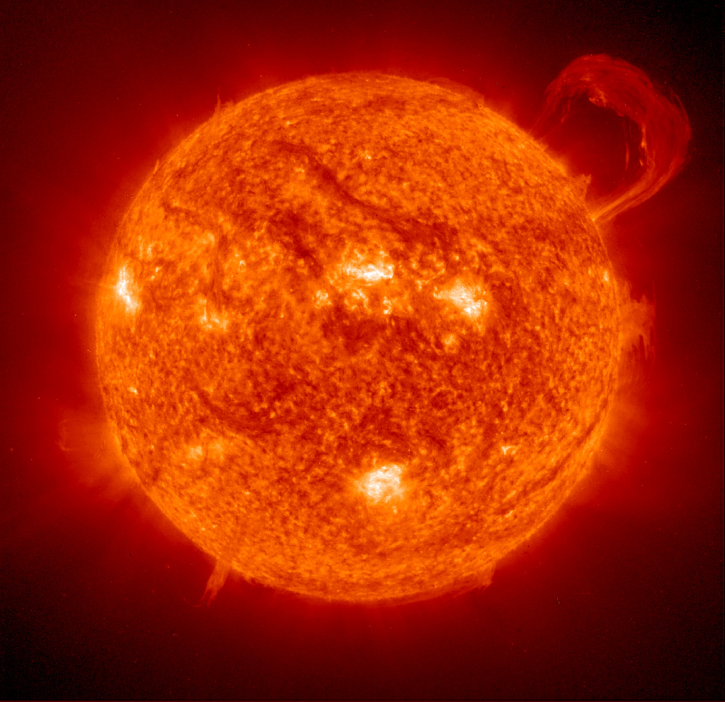Every moment of the day, Earth receives 10,000 times more energy from the Sun than the entire planet uses across our various power systems. The Sun and its energy influence a variety of physical and chemical processes in Earth's atmosphere. The star continuously produces a solar wind made of charged particles that flows outward into the solar system and quickly reaches Earth. When the solar wind interacts with Earth’s magnetic field—called the magnetosphere— it can cause magnetic reconnection, an explosive process that allows charged particles from space to accelerate into the atmosphere. This process generates glowing auroras near Earth’s poles that are the result of billions of individual collisions of solar wind particles, lighting up the planet’s magnetic field..
One important form of solar data, solar spectral irradiance data, include measurements of radiation coming from the Sun (solar irradiance in various spectral regions) as well as solar particle fluxes and their effects on Earth’s magnetosphere. Collecting data on aurora and other phenomenon gives scientists insight into how our planet's magnetosphere reacts to the space weather near Earth and the effects the Sun has on our planetary environment.
Our data provide information about nearly every aspect of Sun-Earth interaction including observations of the dynamic processes of the Earth's ionosphere and solar magnetosphere triggered by solar events, changes in the Sun’s appearance or behavior, and measurements of solar energetic particles associated with solar flares and coronal mass ejections that reach Earth.
Latest Sun-Earth Interactions News
Join Our Community of NASA Data Users
While NASA data are openly available without restriction, an Earthdata Login is required to download data and to use some tools with full functionality.
Learn About the Benefits of Earthdata LoginFrequently Asked Questions
Earthdata Forum
Our online forum provides a space for users to browse thousands of FAQs about research needs, data, and data applications. You can also submit new questions for our experts to answer.
Submit Questions to Earthdata Forumand View Expert Responses


